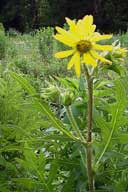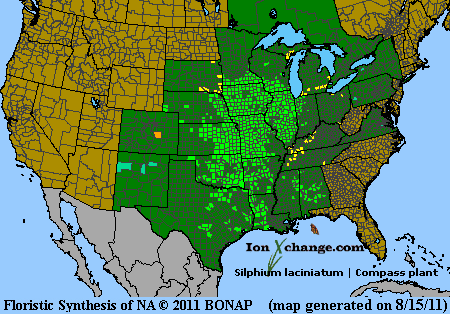 Loading... Please wait...
Loading... Please wait...- Home
- SEEDS
- SEED MIXES
- BUY PLANTS
- Info Request
-
Educational Videos
- Greenhouse Transplanting Demonstration
- Native Seed Cleaning demonstration at Ion Exchange Native Seed and Plant Nursery
- Attracting Butterflies
- Bidens - Bidens cernua Harvest Video
- Big Blue Stem Harvest
- Butterfly Milkweed Video
- Button Blazingstar - Liatris aspera Video
- Buttonbush - Cephalanthus occidentalis Video
- Canada Anemone - Anemone canadensis Harvest Video
- Cardinal Flower - Lobelia cardinalis Video
- Control Burn - Wildflower Field
- Cream Gentian - Gentiana flavida
- Culver's Root - Veronicastrum virginicum Video
- Cup Plant - Silphium perfoliatum Video
- Dormant Seeding | Planting
- Earthyman's Favorite Wildflowers Video
- Eco-Friendly Golf Course Seed Mix
- Floating Islands
- Fringed Loosestrife - Lysimachia ciliata Video
- Giant Yellow Hyssop - Agastache nepetoides Video
- Indiangrass - Sorghastrum nutans Video
- Iowa Prairie Partner Program
- Leadplant - Amorpha canescens (Potted) Video
- Meadow Blazingstar - Liatris ligulistylis
- Midland Shooting Stars - Dodecatheon meadii Video
- Native Plant Nursery Field Irrigation Experiment
- Nodding Onion - Allium cernuum Video
- Ohio spiderwort - Tradescantia ohiensis Video
- Old Man's Beard - Clematis virginiana blooms Video
- Oxeye Sunflower - Heliopsis helianthoides Video
- Prairie Spiderwort - Tradescantia bracteata
- Purple Coneflower - Echinacea purpurea Video
- Rain Garden or Water Garden Video
- Rattlesnake Master - Eryngium yuccifolium Video
- Riverbank Stabilization - Wetland Plants
- Rose Mallow - Hibiscus militaris Video
- Rosinweed - Silphium integrifolium Video
- Royal Catchfly - Silene regia
- Showy Tick Trefoil - Desmodium canadense Video
- Sneezeweed - Helenium autumnale Video
- Swamp Betony - Pedicularis lanceolata Video
- Swamp Milkweed - Asclepias incarnata Video
- Sweet Blackeyed Susan - Rudbeckia subtomentosa Video
- Tall Coreopsis - Coreopsis tripteris Video
- Urban Butterfly Garden
- Wild Bergamot - Monarda fistulosa Video
- Wild Geranium - Geranium maculatum Harvest
- Wild Goldenglow - Rudbeckia lanciniata Video
- Wild Petunia - Ruellia humilis Harvest Video
- Woodland Knotweed - Polygonum virginianum Video
- Yellow Coneflower - Ratibida pinnata Video
- Blog
- Resources
- Policies
Contact Us
Phone:
563-419-0837
or 563-535-7231
Email:
hbright@ionXchange.com
Browse Products
Add to Wish List
You Recently Viewed...
Our Newsletter
Product Description
"Compass Plant, Rosinweed (also refers to S. integrifolium), Turpentine Plant, Polar Plant"
Silphium is an ancient Greek term for "resinous juices". Lacinatum is the latin word meaning "torn; jagged; cut into long, narrow pieces", referring to the deeplu cut leaves.
| Sun Exposure | Prairie, Savanna |
| Soil Moisture | Wet, Wet Mesic, Mesic, Dry Mesic |
| Bloom Time |
Summer, Fall June, July, August, September |
| Bloom Color | Yellow |
| Max Height | 8 feet |
| Wetland Code | UPL |
| Germ Code | C(60) |
| Seeds Per Ounce | 660 |
Found throughout the tallgrass Prairie region and south on mesic prairies. Bright yellow flowers bloom from July through August. Very tall plant, sometimes reaching 8 or more feet. The taproot is also very long, reaching as much as 4 to 5 feet into the ground. The common name, Compass Plant, comes from the fact that the basal leaves tend to align themselves in a north/south direction
Native Americans brewed a root tea for lung bleeding, back and/or chest pain, to ease profuse menstruation and to induce vomiting. The smoke from the entire burning plant was inhaled to relieve head colds and ease the effects of neuralgia and rheumatism. Historically, a tea made from the roots of S. lacinatum was used to reduce the swelling of an enlarged spleen, fevers, internal bruises, debility, liver ailments and ulcers. This is a toxic species, but the toxicity is unknown.
The Omaha and Ponca tribes would not camp where Compass Plant grew as they believed that lightning was attracted to such places. During electrical storms, they burned the entire to act as a charm to ward off lightning strikes.
Edible Uses: A resin exudes naturally from the plant, and can also be obtained by incision. It is an inexpensive substitute for mastic and is used as a chewing gum to sweeten the breath. It forms on the upper part of the flowering stem.
Medicinal Uses: The resin obtained from the plant is diuretic. It imparts a strong aromatic odour to urine. A tea made from the roots is vermifuge and a tonic for general debility. It is used as an expectorant in coughs and other pulmonary ailments. A decoction of the smaller roots has been used as an emetic. A tea made from the leaves is emetic, it has also been used in the treatment of coughs, lung ailments and asthma.
Herbal Uses: Unknown












